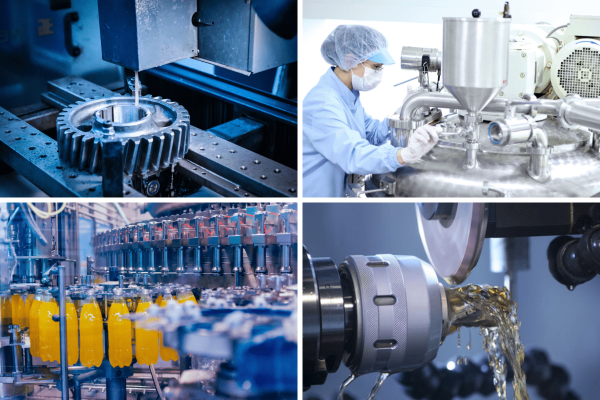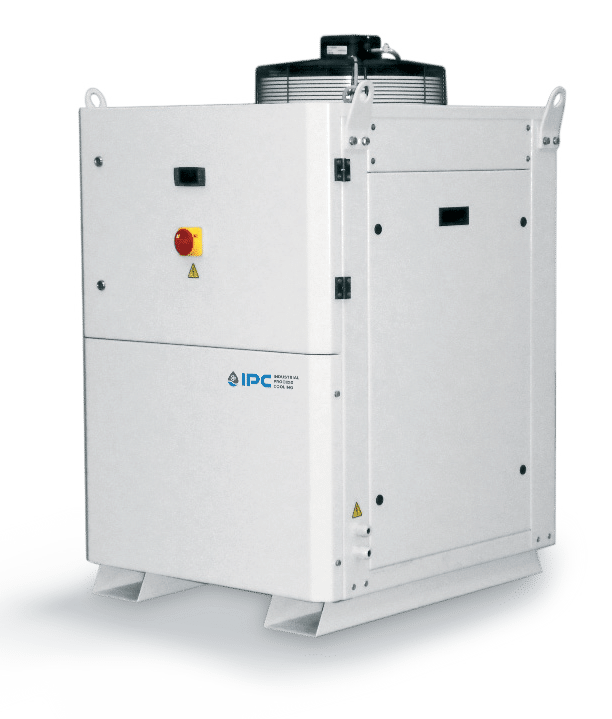
What is an Industrial Water Chiller?
Industrial water chillers are used for controlled cooling of products, mechanisms and machinery in a variety of industries. An industrial chiller system removes heat from the process water and transfers it to air via a heat exchanger. Using the refrigeration cycle, water chillers are able to cool the water to below ambient temperature. Water chiller capacities are measured in tons (BTU/hr) of cooling.

How Does a Water Chiller Work?
Water is drawn from the tank, pumped through the chiller and back to the tank. An adjustable thermostat senses the liquid temperature, cycling the chiller to maintain a constant temperature in the tank. The water flows from the chiller to the application’s point of use and back.
Having a contaminant free “closed loop” system will increase your chiller’s efficiency and lengthen its life cycle. A closed-loop industrial chiller recirculates a clean coolant or clean water with condition addititives at a constant temperature and pressure to increase the consistent and repeatable variables.

What is a Chiller Used For?
Water chillers are used in a variety of industrial applications. Our chillers are the ideal solution to your cooling your spot welder system and other machinery. Some of the industries water chillers are used for include:
- Metal Forming, Resistance Welding Machinery, Presses, Rolling Mills, Extruders
- Chemical & Pharmaceutical, Medical, MRI, X-Ray
- HVAC, OEM, Construction, Power Generation, Textile
- Food & Drink, Breweries, Distilleries, Wineries, Bakeries

What Size Water Chiller Do I Need?
How do I size a water chiller? How much does it take to cool my industrial process?
T. J. Snow can help you find the correct size water chiller for your industrial application by using the link below.

Why Should I Invest in a Water Chiller?
- Save valuable resources, time & money!
- Improve productivity and reduce downtime of machinery
- Protect your machinery and equipment
- Reduce maintenance and operating costs
- Conserve water and energy
- Eliminate water monitoring and associated costs









